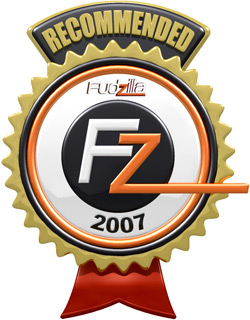Page 2 of 2
Benchmarking
Gainward Goes Like Hell and 8800 GT is the fastest 8800 GT we’ve tested so far. The core runs at 700MHz, just like Zotac's 8800 GT AMP card that we’ve used to compare to 8800 GT GLH. However, GLH’s advantage is Shader speeds that run at 1750MHz compared to Zotac’s 1700MHz, as well as memory speeds which are 25MHz faster compared to Zotac’s 1000MHz.
Still, the difference is not that visible, and since Zotac opted for a different cooler, Gainward will have a strong competitor.

Gainward’s card wins this test, but only by a small margin. The important thing is that both of these cards beat 8800 GTX in 3DMark tests.
As long as you’re not gaming at ultra-high resolutions, there will be no need for buying an 8800 GTX card – 8800 GT will be more than enough. Zotac AMP is an overclocked 8800 GT card running at 700MHz core, 2000MHz memory and 1700MHz Shader speeds. These are great indicators to what we can expect from this card. Gainward’s speeds are even faster, so it’s up to you to decide which one you want.
Gaming
In Company of Heroes, Gainward and Zotac are again somewhat evened out.

Resolutions of 1024x768 and 1280x1024 are reserved for 8800 GT overclocked cards. Gainward 8800 GT GLH beats reference cards by 11%, and we see it even beats 8800 GTX. With antialiasing on, and resolution of 1600x1200, GLH and AMP cards beat reference 8800 GT cards by 13%, and 2048x1536 yields similar results. At this resolution, 8800 GTX beats Gainward 8800 GT GLH by 4 frames, and Gainward beats Zotac 8800 GT AMP by a single frame.
In F.E.A.R., Gainward 8800 GT GLH had a great jump start, but higher resolutions evened it out with Zotac’s 8800 GT AMP.

In F.E.A.R., overclocked 8800 GT’s easily outperform reference 8800 GT’s. Gainward is up to 19% better than reference design. At higher resolutions, 8800 GTX beats the rest of the pack without breaking a sweat, but at 1024x768 8800 GT GLH is better.

For a graphics card, World in Conflict is not an easy task. Higher resolutions with antialiasing on are more suitable for 8800 GTX, but lower resolutions make 8800 GT and 8800 GTX score almost evenly. Zotac 8800 GT AMP didn’t show a significant advantage over reference cards, and Gainward didn’t fare better, either – it outperformed reference cards by just 4%.
Conclusion
We’ve been searching high and low for an 8800 GT card with a better cooler, and we’ve found it in the guise of Gainward's 8800 GT PCX Golden Sample (Goes Like Hell). This is a great card, and the fastest 8800 GT you can buy. The core runs at 700MHz and the Shaders at 1750MHz. The memory soared really high, 1025MHz (effective 2050MHz), and it’s the fastest memory among 8800 GT family.
The cooler is dual-slot and the fan is quiet. We’ve seen that the results are excellent, and that it easily outperforms reference cards. With 8800 GT and VP2 engine, you can watch multimedia content in HD quality, without burdening the central processor. Two dual-link DVI’s with HDCP are natively supported, and HDTV picture quality is excellent. Still, Gainward ships a working DVI-to-HDMI dongle, just in case.
The card is listed a bit over €250,-, but availability is a big problem, because the demand for 8800GTs is not subsiding. If you manage to get your hands on a Gainward 8800 GHL card, then we’d seriously recommend you buy one – because it’s overclocked to some great speeds, and the fan has no problems cooling these fast cards.
As this is the only dual slot cooler card we can warmly recommend it.

« Prev Next
